Tsukiji Market Tokyo: Best Food, Tours, and Opening Hours

Explore Tokyo's iconic Tsukiji Market while indulging in Japan's delicious food. Discover the best food, opening hours, tours, activities, and more.
Tokyo's Tsukiji Market
Tsukiji Market was originally established in 1935 and served as Tokyo's main wholesale fish market until 2018.
The market was divided into two main areas: the Tsukiji Inner Market, which focused on wholesale transactions primarily for professionals, and the Tsukiji Outer Market, featuring retail shops, restaurants, and cafés catering to individual customers.
In 2018, the wholesale fish market was relocated to Toyosu, where the famous tuna auctions can now be viewed.
The current Tsukiji Market consists of the Outer Market, which boasts some of the best sushi restaurants in Tokyo, along with shops selling Japanese food and souvenirs, as well as cafés offering matcha desserts and other treats.
Visiting Tsukiji Market provides an excellent opportunity to enjoy top-quality sushi and seafood while experiencing Tokyo's rich culinary culture.
Opening Hours at Tsukiji Market: Shops Stay Open Until 14:00, Restaurants Until 22:00
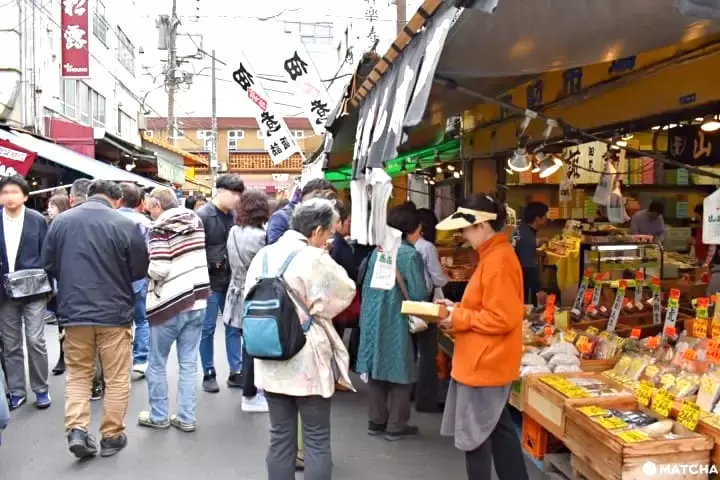
Tsukiji Market is a public space that can be accessed at any time of the day or night.
However, please note that business hours vary for each establishment. Retail shops selling seafood, meat products, vegetables, and fruit typically open as early as 5:00 AM and close by 14:00 or 15:00. If you're looking to buy fresh produce, it's best to visit before noon.
Restaurants, including sushi places, usually operate during lunchtime from 11:00 to 15:00 and during dinnertime from approximately 17:00 to 22:00. Some restaurants may stay open until 23:00 or even as late as 3:00 AM.
If there is a specific establishment you would like to dine at, be sure to check their business hours on the official Tsukiji Market website.
The Best Time to Visit: 11:00 for Lunch Followed by Shopping
The best time to visit Tsukiji Market is around 11:00, one hour before noon. We recommend enjoying an early lunch at a sushi or seafood restaurant and then exploring the shops in the market to pick up snacks and souvenirs.
Restaurants tend to become very crowded between 12:00 and 13:30, so it's advisable to avoid trying to have lunch during this peak time.
How Many Hours to Spend at Tsukiji Market
We recommend setting aside at least two to three hours to explore Tsukiji Market, especially if you plan to have lunch there. There are also several cafés where you can take a break during your visit.
If you plan to participate in a sushi-making workshop or visit the impressive Tsukiji Hongwanji Temple, it would be wise to allocate half a day for your time at Tsukiji Market.
Tokyo Tsukiji Market Budgeting Tips
A sushi meal at Tsukiji Market can cost between 2,000 and 3,500 yen. If you also plan to visit a café for desserts and coffee, as well as do some souvenir shopping, it's advisable to bring at least 8,000 to 10,000 yen with you.
Most restaurants accept credit cards, but it's a good idea to carry at least 8,000 yen in cash, as some food stands may only accept cash payments.
The Best Food to Eat and Popular Shops at Tsukiji Market
1. Sushiizanmai Honten
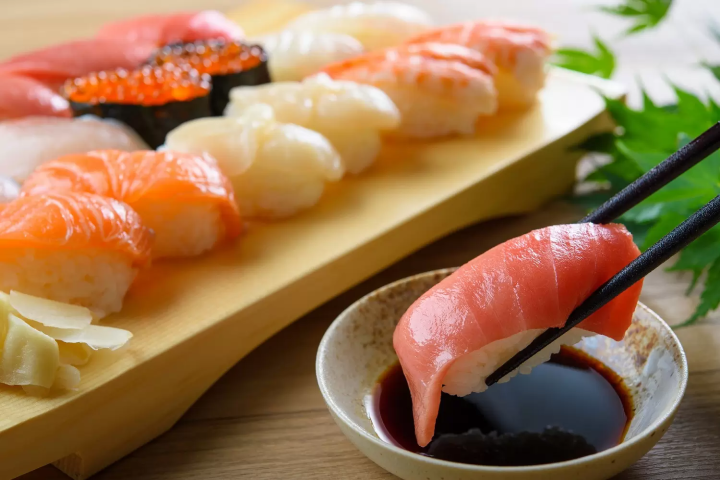
Sushizanmai is a restaurant that places great emphasis on selecting the finest tuna. They source fresh ingredients from fishing grounds and markets across Japan and around the world, including Toyosu.
Their menu features over 150 types of sushi, offering not only classic toppings but also seasonal recommendations, rare selections, and limited-time seasonal items.
The restaurant is wheelchair accessible and provides a beautiful Japanese atmosphere. They have another store within Tsukiji Market called Sushizanmai Bekkan.
Sushiizanmai Honten
Location: Map
Hours: open 24 hours
Credit card: accepted
Website: https://www.tsukiji.or.jp/english/shoplist/cat-d/cat-12/364/
2. Tsukiji Aozora Sandaime Honten
Tsukiji Aozora Sandaime Honten is a sushi restaurant operated by former fishmongers who worked for many years in Tsukiji.
The restaurant offers over 30 types of sushi, including wild Pacific bluefin tuna. The menu is available in both English and Chinese.
Tsukiji Aozora Sandaime Honten
Location: Map
Hours: weekdays - lunch 10:30 - 14:30, dinner 17:30 - 22:00. Saturdays, Sundays, public holidays 10:30 - 22:00
Website: https://www.tsukiji.or.jp/english/shoplist/cat-d/cat-12/406/
3. Marukita: For Delicious Kaisendon (Rice Topped with Seafood)
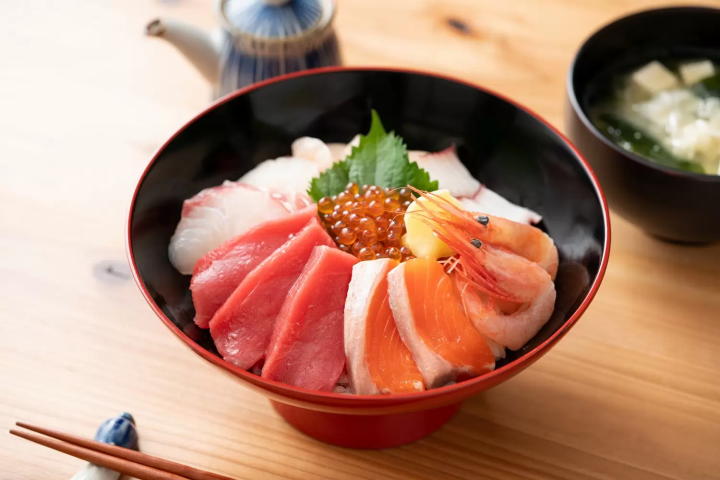
At Marukita, you can enjoy kaisendon, a dish that consists of rice topped with seafood, often referred to as sashimi bowls. Their offerings feature a selection of fresh, raw seafood that pairs perfectly with seasonings like soy sauce and wasabi.
Kaisendon is a specialty that tastes best at a seafood market like Tsukiji.
Marukita has three locations in the Tsukiji area and offers 30 different varieties of kaisendon on their menu. Please note that Marukita operates only in the morning and at lunchtime.
Their menus are available in English, Chinese (both simplified and traditional), and Korean.
Marukita Kaisendon 2nd Branch
Location: Map
Hours: weekdays 5:00 - 15:00, Saturdays, Sundays, public holidays 5:00 - 16:00
Website: https://www.tsukiji.or.jp/english/shoplist/cat-d/cat-13/1018/
4. Tsukiji Yamacho: Omelet Snacks
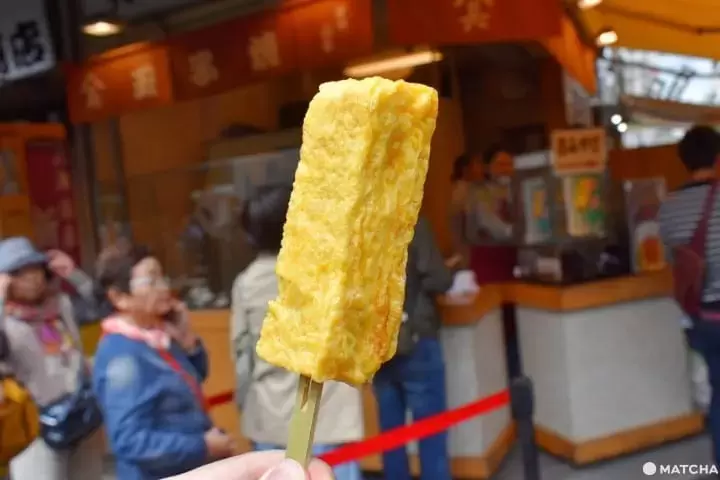
Tamagoyaki is a popular rolled omelet snack to enjoy on the go in Tsukiji. At Yamacho, you can savor delicious and affordable tamagoyaki while watching skilled chefs prepare the omelets right in front of you.
A kushitama (skewered omelet) is available for 100 yen. You can also purchase box tamagoyaki, with the basic Yamacho Tamagoyaki priced at 800 yen, while other flavor variations start at 1,000 yen and above.
Although there are often lines at the shop, the service is efficient, so you won't have to wait long. You can choose between sweetened and unsweetened flavors of tamagoyaki. Be sure to try this fluffy, rich delicacy!
Tsukiji Yamacho
Location: Map
Hours: 6:00 - 15:30
Website: https://www.tsukiji.or.jp/english/shoplist/cat-c/cat-10/466/
5. Matcha Latte at MATCHA STAND MARUNI
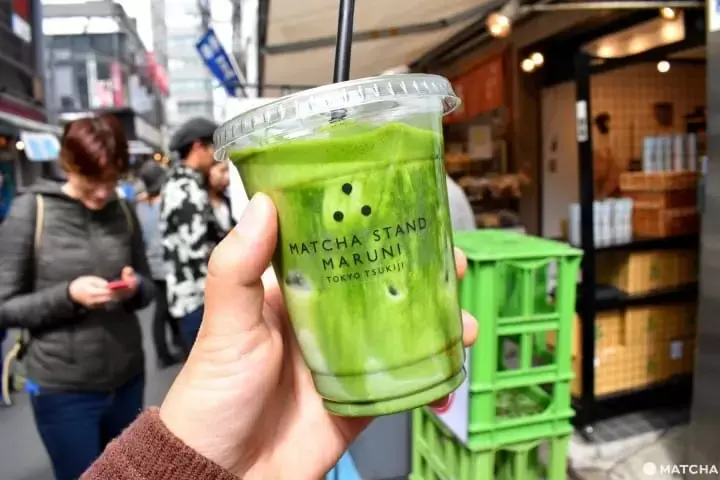
MATCHA STAND MARUNI’s matcha latte, priced at 500 yen, is another must-try at Tsukiji. This tea stand operates alongside a 100-year-old nori (dried seaweed) shop.
Visitors can watch the matcha being brewed right at the storefront before it is served to customers. The aromatic matcha combined with rich milk creates a magnificent and delicious latte.
MATCHA STAND MARUNI
Location: Map
Hours: 8:00 - 16:00, Sundays 9:00 - 15:00 *Closed on Wednesdays
Website: https://matchastandmaruni.com/
For other great treats to try at Tsukiji Market, take a look at the articles linked below:
Read also
Recommended Tsukiji Market Tours and Activities
A food tour or a cooking class are great ways to learn about the culinary traditions of Tsukiji Market. We compiled a selection of recommended activities below.
Tsukiji Market Shopping Trip and Edo Cuisine Cooking Class
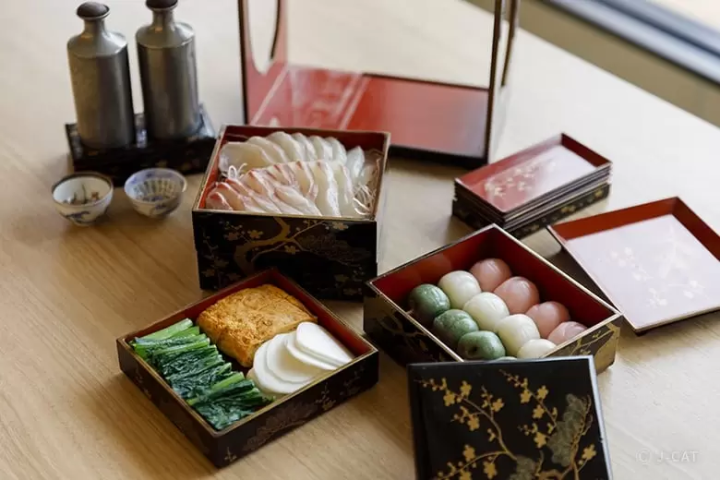
Picture courtesy of Wabunka
This exclusive Wabunka experience is led by expert researcher and chef Hanako Usui. The tour begins with a visit to Namiyoke Shrine, the guardian of the Tsukiji district.
Participants then accompany Ms. Usui to her trusted suppliers at Tsukiji Market to shop for ingredients. Finally, at a stylish private venue, you will learn about Edo food culture and prepare a seasonal Edo course, which you will enjoy after the experience.
The entire experience lasts approximately two and a half hours and provides a valuable introduction to the culinary traditions that have developed around Tsukiji.
Tsukiji Fish Market Street Food Half-Day Tour
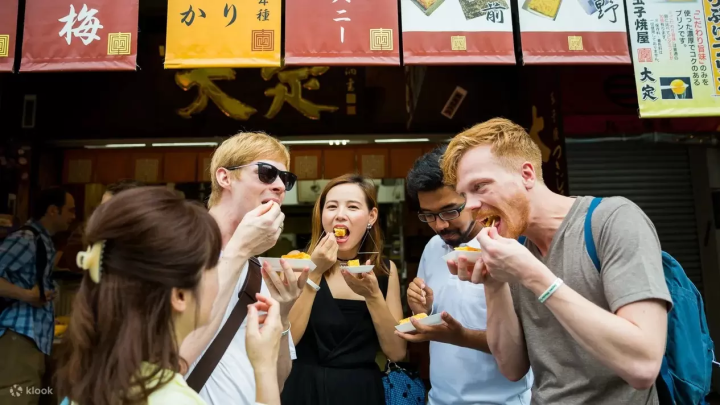
Picture courtesy of Klook
This half-day food tour of Tsukiji is an excellent way to gain insider knowledge about the history of Tsukiji Market while enjoying local treats recommended by a knowledgeable guide. You’ll meet your guide at Tsukiji Honganji Temple, where they will take you to popular local shops known for their best produce.
During the tour, you'll have the opportunity to savor a variety of treats, including Tsukiji omelet, fried fish cakes, seasonal fruits, top-grade Wagyu beef skewers, and seafood bowls or sushi.
Sushi Making Class at Tsukiji Market
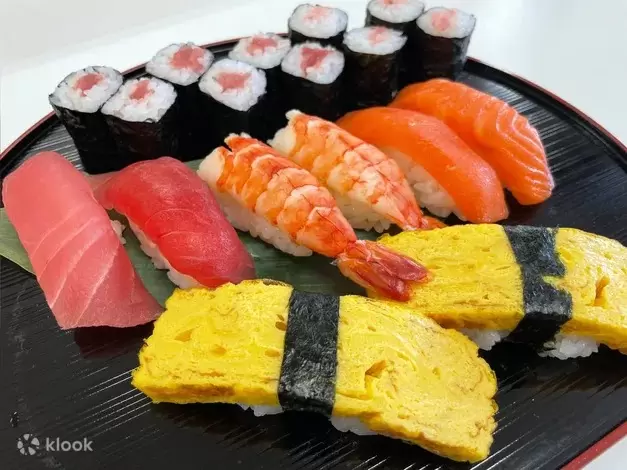
Picture courtesy of Klook
Learn to make sushi from a professional chef at Tsukiji Market. A skilled artisan will prepare ingredients sourced from Tsukiji right before your eyes.
You’ll also discover how to make sushi rice, enabling you to easily recreate sushi at home after the tour. You'll be making four different kinds of sushi.
The experience is conducted in English and is suitable for children.
Access: The Nearest Station Is Tsukiji Station
Tsukiji Station on the Tokyo Metro Hibiya Line is the nearest station to Tsukiji Market.
At Tsukiji Station (Hibiya Line), use Exit 1, then walk left for about 150 meters to reach Tsukiji Market.
From Tsukiji Station on the Toei Oedo Line, take Exit A1 and walk right for approximately 200 meters to arrive at the market.
Access from Tokyo Station
Take the Tokyo Metro Marunouchi Line from Tokyo Station, transfer to the Hibiya Line at Ginza Station, and exit at Tsukiji Station. The journey takes about ten minutes and costs 170 yen.
What is Tsukiji Market Like at Night
While shops close as early as 15:00 and cafés by 20:00, many sushi and seafood restaurants in Tsukiji Market remain open late into the night, making it a great spot for a late dinner.
The area is generally safe at night, although you may come across groups of intoxicated salarymen leaving izakaya bars. These groups are usually harmless.
Hotels Near Tsukiji Market
Tsukiji is within walking distance of Tokyo's Ginza district, offering a variety of hotels to suit any budget.
We recommend the Mitsui Garden Hotel Ginza Tsukiji, which features spacious rooms perfect for longer stays and numerous dining options within the hotel. The Hotel Keihan Tsukiji Ginza Grande is another stylish choice, boasting rooms with beautiful city views.
For a more budget-friendly option, consider Tokyu Stay Tsukiji, located just a 3-minute walk from Tsukiji Market.
Toyosu Market vs Tsukiji Market
Toyosu Market is the new wholesale market for fish and seafood, where you can witness the famous tuna auctions early in the morning. The large market offers numerous sushi restaurants and shops.
In contrast, Tsukiji Market is Tokyo's historic food market, with some restaurants and shops operating for over 80 years. It's a vibrant place to experience local street food and has many tourist-friendly eateries.
Additionally, Tsukiji is located close to Tokyo's Ginza district, allowing you to visit both in one day. With several Tokyo landmarks nearby, Tsukiji offers rich historical and culinary experiences.
Read also
Ramona, English content editor at MATCHA since 2016, has been practicing ikebana flower arrangement (Ikenobo School) and tea ceremony (Omote Senke) since 2012. She arrived in Japan in 2012 as a graduate student with a focus on Japanese literature and performing arts. As a travel editor and writer, Ramona has visited and documented 40 of Japan's prefectures with a focus on art, history, traditional Japanese crafts, and performing arts.






























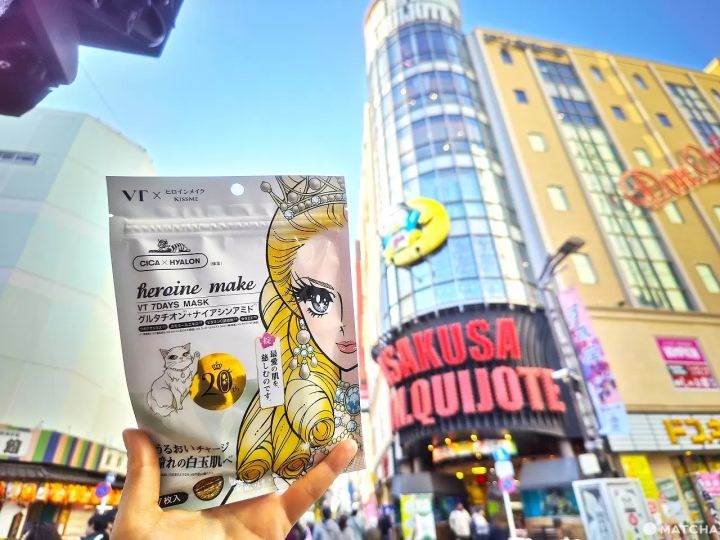

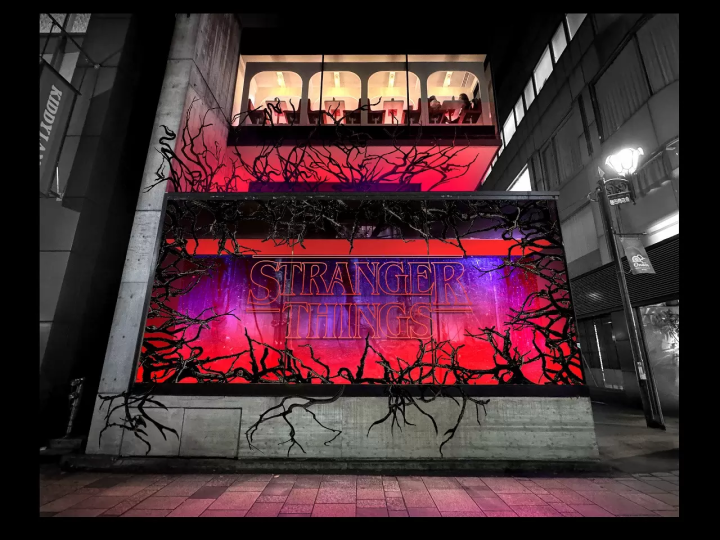
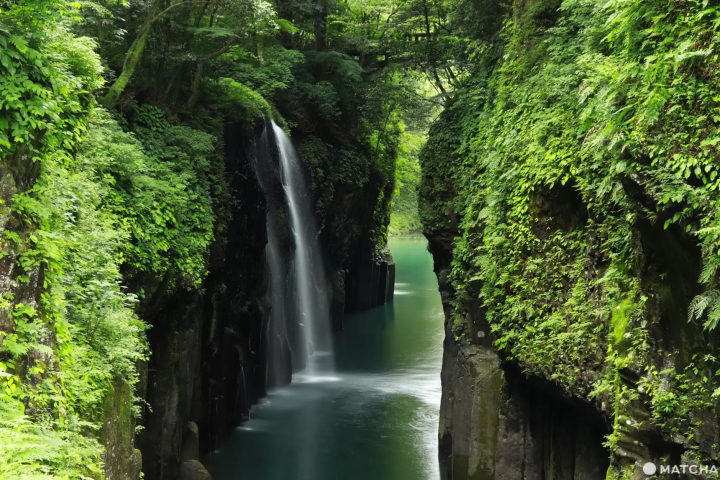




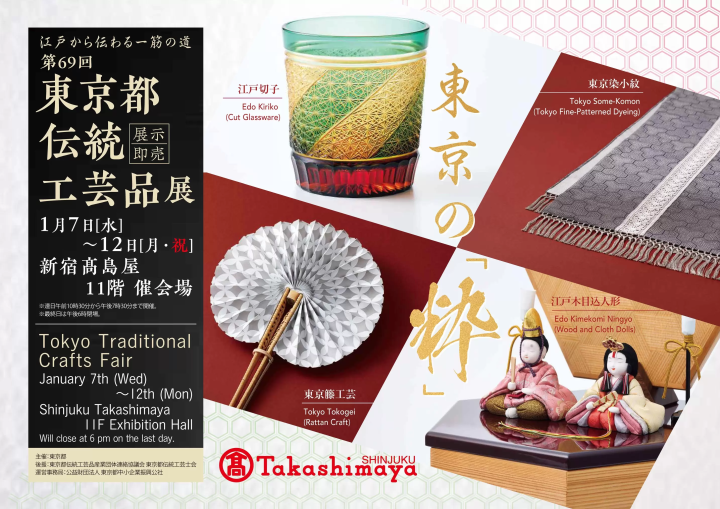

![[THE BLOSSOM KYOTO] Awaken your senses with the Kyoto aesthetic that lives on in the hotel](https://resources.matcha-jp.com/resize/720x2000/2025/07/01-237865.webp)

